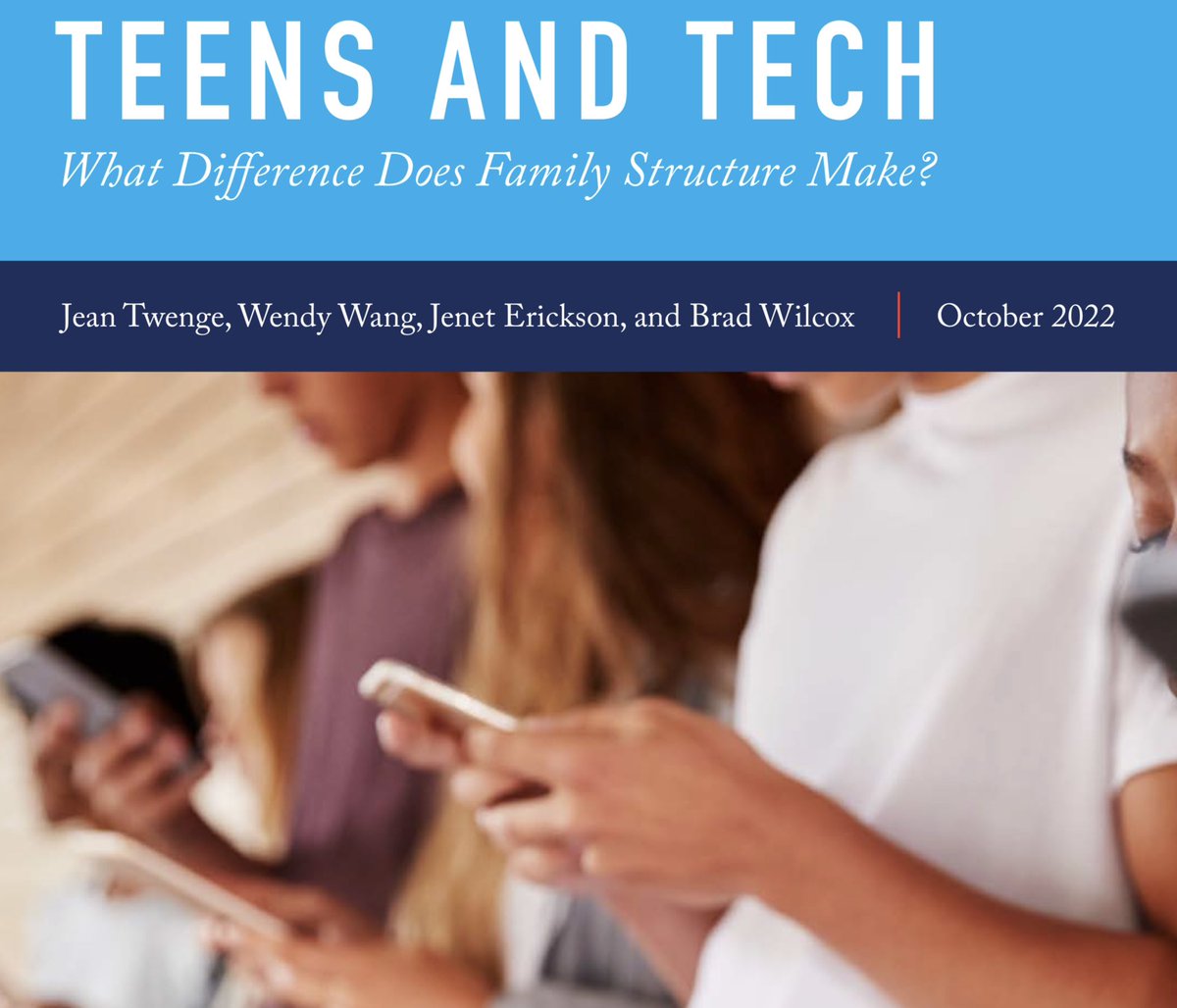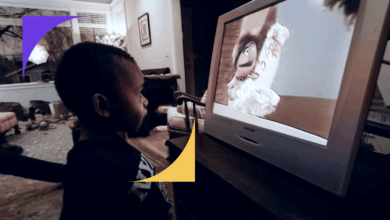
Teens still taking risks now with tech twist. Today’s teens face a unique set of challenges when it comes to risk-taking, with technology playing a pivotal role. From the familiar anxieties of peer pressure and developmental stages to the amplified dangers of social media and online gaming, the digital world presents new avenues for risky behavior. This exploration dives into the nuances of teen risk-taking, examining how technology both reflects and exacerbates these tendencies.
Traditional risk-taking behaviors like skipping school or physical altercations now have online counterparts such as cyberbullying and online harassment. The anonymity and immediacy of online communication can lead to impulsive decisions with far-reaching consequences. This article examines how technology amplifies these risks and explores potential solutions to navigate the digital age safely.
Understanding the Nature of Risk-Taking in Teens
Teenagers are notorious for their willingness to take risks. This isn’t simply about recklessness; it’s a complex interplay of developmental, social, and environmental factors. Navigating this tricky terrain requires understanding the motivations behind these choices. This exploration delves into the core characteristics of teenage risk-taking, examining the influential factors and contrasting it with previous generations.Risk-taking in teenagers is a natural part of development.
It’s a way for them to explore their limits, test boundaries, and build their sense of independence. However, the specific forms and intensity of these risks can vary significantly, influenced by a multitude of factors. Understanding these nuances is crucial for fostering healthy development and guiding teens toward responsible decision-making.
General Characteristics of Teenage Risk-Taking
Teenagers often exhibit a heightened sense of invincibility, leading to a perception of reduced risk associated with certain behaviors. This is intertwined with a desire for social acceptance and belonging, which can be powerfully influenced by peer pressure. Furthermore, the brain’s development during adolescence, particularly the prefrontal cortex, which regulates judgment and impulse control, is still maturing. This explains why teens might make decisions that appear impulsive or risky to adults.
Factors Influencing Risk-Taking
Several factors contribute to risk-taking behavior in teenagers. Peer pressure, a strong social force, can significantly influence decisions, especially during the crucial developmental period of adolescence. Social media, with its constant exposure to idealized lifestyles and peer comparisons, amplifies the pressure to conform and fit in. This, coupled with the need for validation and social acceptance, can lead teens to engage in risky behaviors.
Developmental stages also play a critical role. Teens are often striving for independence and autonomy, leading them to push boundaries and take calculated (or sometimes, not-so-calculated) risks.
Examples of Common Teenage Risks (Non-Technological)
Teens often take risks related to social activities, such as experimenting with substances or engaging in unsafe sexual practices. Driving behaviors, including speeding or reckless driving, also represent common risks. Participating in dangerous sports or activities, and even risky financial decisions, are also examples of common teenage risks. These risks are not unique to the present generation, but the nature and extent of these risks might vary.
Comparison of Risk-Taking Across Generations
Comparing teenage risk-taking across generations requires careful consideration of societal norms and values. While the desire for independence and exploration is a consistent theme, the specific forms of risk-taking may differ. For example, in past generations, risky behaviors might have included things like sneaking out or engaging in minor acts of defiance, whereas current risks might involve cyberbullying or online harassment.
The availability of technology plays a significant role in this evolution.
Historical Perspective on Teenage Risk-Taking, Teens still taking risks now with tech twist
Throughout history, teenage risk-taking has been observed, although the specific expressions have evolved with changing societal norms and values. In earlier eras, social structures often exerted stronger controls on adolescent behavior, potentially leading to less overt risk-taking. However, the drive for self-discovery and independence remains a constant. The influence of societal expectations and values, along with evolving technology, shapes the types of risks teens take in each generation.
For example, in the 1950s, teenagers might have engaged in activities such as attending dances or driving around with friends, whereas today, teens might be more inclined to engage in online gaming, social media interactions, or risky online behaviors.
The Technological Twist
The digital age has irrevocably altered the landscape of teen risk-taking. While traditional risks like physical altercations and reckless driving remain, technology has introduced a new dimension, amplifying existing dangers and creating entirely novel ones. This shift demands a nuanced understanding of how the digital world influences teenage decision-making and behaviors.Technology acts as a powerful catalyst, transforming the nature and scale of teen risks.
This isn’t just about the internet; it’s about the constant connectivity and the pervasive nature of social media and online gaming platforms. The ease of access and the immediacy of online communication significantly impact how teens perceive and react to challenges, often leading to impulsive actions with far-reaching consequences.
Teens are still taking risks, only now with a tech twist. It’s a bit like the old days, but with a new digital frontier. This recklessness, unfortunately, isn’t just confined to the virtual world. Things like the Trump administration sabotaging Obamacare trump administration sabotaging obamacare show how easily adults can jeopardize established systems, which, in turn, might impact the future safety nets for these teens.
Ultimately, it’s a reminder that while technology changes, the core issues of risk-taking and responsible choices remain relevant across generations.
Social Media and Online Gaming Risks
Social media platforms, designed for connection, can paradoxically create environments of intense pressure and comparison. The curated online personas often portray idealized versions of life, leading to feelings of inadequacy and a desire to emulate those personas. This can manifest in behaviors that range from cyberbullying to the pursuit of online validation, both of which can be quite damaging.
Similarly, online gaming communities, while offering a sense of belonging, can also encourage competition and aggressive behavior, fostering an environment that is conducive to risks, such as online harassment and the sharing of harmful content.
Teens are still taking risks, but now with a tech twist. It’s fascinating how the latest gadgets and apps can be both incredibly useful and potentially dangerous. Finding healthy, balanced options for their diet, like the best paleo brands and products, like these , might help them navigate the tricky waters of social media and online interactions.
Ultimately, the responsibility still falls on teens and parents to encourage safe online habits and responsible use of technology.
Anonymity and Online Disinhibition
Anonymity plays a significant role in online risk-taking. The perception of being unseen or unknown can diminish inhibitions and encourage impulsive behaviors that would be unthinkable offline. This phenomenon, known as online disinhibition effect, can lead teens to express opinions, engage in arguments, or even participate in activities that they would never consider in person. It’s crucial to recognize that this sense of detachment can contribute to cyberbullying, harassment, and the dissemination of harmful information.
Accessibility and Immediacy of Online Communication
The ease and speed of online communication can significantly alter decision-making processes. Instant messaging, social media updates, and online gaming platforms foster a culture of immediacy, often leading to impulsive choices without adequate reflection. This lack of a cooling-off period can result in rash decisions with long-term consequences. The pressure to respond immediately, to keep up with trends, and to participate in online conversations can create significant challenges for teens who may not be equipped to handle these rapid-fire interactions.
Comparison of Offline and Online Risk-Taking
| Offline Risk | Online Risk |
|---|---|
| Physical altercation | Cyberbullying |
| Skipping school | Social media stalking |
| Driving recklessly | Online harassment |
| Drug use | Sharing illicit content |
The table above highlights the contrasting nature of offline and online risk-taking behaviors. While offline risks often involve tangible consequences, online risks can be equally damaging, albeit in different ways. The anonymity and immediacy of online interactions can exacerbate the potential for harm and make it more challenging to intervene and prevent risky behaviors.
Specific Examples of Risks with a Tech Twist: Teens Still Taking Risks Now With Tech Twist
Navigating the digital world presents unique challenges for teens. While technology offers incredible opportunities, it also exposes them to risks that can significantly impact their well-being and future. Understanding these risks is crucial for parents, educators, and teens themselves to make informed choices and stay safe online.
Online Reputation and its Impact on Teen Behavior
Teens are acutely aware of their online presence and how it reflects their image. The constant fear of negative feedback, judgment, and criticism from peers and strangers can significantly influence their online behavior. This pressure often leads to teens trying to present an idealized version of themselves, potentially leading to risky behaviors like exaggerating accomplishments or posting misleading information.
The consequences of a damaged online reputation can be far-reaching, affecting future opportunities, social interactions, and mental well-being.
Cyberbullying and Online Harassment
Cyberbullying and online harassment take a heavy toll on teens. Bullying transcends physical boundaries, with perpetrators using technology to relentlessly target victims. The anonymity provided by the internet can embolden bullies and create a sense of impunity. This can result in significant emotional distress, social isolation, depression, and even suicidal ideation in severe cases. It is vital to recognize the insidious nature of cyberbullying and the need for swift intervention and support.
Teens are still taking risks, now with a tech twist. From online challenges to risky social media trends, the dangers are evolving. It’s a constant reminder that even with modern technology, the fundamental human need to push boundaries remains. Interestingly, similar dedication and focus are needed in areas like preventing hair loss during breast cancer treatment, a challenge faced by many battling the disease.
Thankfully, strategies like those detailed in this helpful article on preventing hair loss in breast cancer treatment can help patients focus on recovery and wellness. Ultimately, understanding the risks and finding solutions is key, whether it’s navigating online pitfalls or facing health challenges like hair loss.
Online Scams and Fraudulent Activities
Teens are increasingly vulnerable to online scams and fraudulent activities. Sophisticated schemes targeting teens often exploit their inexperience with financial matters. Phishing scams, where criminals attempt to trick individuals into revealing personal information, are particularly common. Fake online accounts and impersonation are also used to deceive teens into sending money or sharing sensitive data. Protecting teens from these scams requires educating them about common red flags and encouraging cautious online behavior.
Sexting and Sharing Inappropriate Content
Sexting, the act of sending sexually suggestive messages or images, poses significant risks. Teens may not fully understand the long-term consequences of sharing such content. This can lead to legal ramifications, emotional distress, and irreparable damage to their online reputation. The dissemination of inappropriate content can also expose teens to blackmail and exploitation. Open communication and education about consent, online safety, and the permanence of digital content are crucial in mitigating these risks.
Online Addiction and Compulsive Behaviors
Excessive use of technology can lead to online addiction and compulsive behaviors. This can manifest as spending excessive amounts of time on social media, gaming, or other online platforms, impacting schoolwork, relationships, and overall well-being. The addictive nature of certain online activities can lead to social isolation, anxiety, and depression. Understanding the signs of online addiction and seeking professional help is essential for teens struggling with this issue.
Table of Online Risks
| Risk Type | Consequences | Prevention Strategies |
|---|---|---|
| Cyberbullying | Emotional distress, social isolation, depression, anxiety | Online safety education, reporting mechanisms, support systems, promoting empathy and respect online |
| Sexting | Legal ramifications, emotional distress, reputation damage, exploitation | Open communication, responsible use of technology, consent education, understanding the permanence of online content |
| Online scams | Financial loss, identity theft, emotional distress | Awareness of scams, verification procedures, financial literacy, skepticism of unsolicited requests for personal information |
| Online addiction | Mental health issues, relationship problems, academic difficulties | Self-regulation strategies, setting boundaries, seeking professional help, recognizing warning signs of addiction |
Potential Consequences and Impacts

Navigating the digital world is a crucial aspect of teenage life, yet it comes with its own set of risks. Teens today are constantly connected, and this constant connectivity can lead to risky behaviors with potentially serious consequences. Understanding these potential pitfalls is essential for both teens and their parents. It’s not just about the technology itself, but how it influences choices and behaviors.The consequences of these tech-driven risks extend far beyond the immediate online experience.
They impact teens’ physical and mental well-being, their relationships, their academic performance, and even their future prospects. Recognizing the seriousness of these issues is paramount in helping teens navigate the digital landscape safely and responsibly. Parental guidance and support play a pivotal role in mitigating these risks, but understanding the different approaches various families take is also crucial.
Negative Impacts on Physical and Mental Well-being
The constant barrage of digital stimuli and the potential for negative interactions can significantly affect a teen’s physical and mental health. Cyberbullying, for example, can lead to stress, anxiety, and sleep disruptions. These issues can manifest in physical symptoms like headaches and stomach aches. The emotional toll can be substantial, potentially leading to depression, low self-esteem, and social isolation.
Sexting, while seemingly harmless, can result in legal trouble and the exposure to sexually transmitted infections. The associated guilt, shame, and anxiety can have a profound impact on a teen’s mental health. Furthermore, online addiction, driven by constant stimulation and social comparison, can lead to physical health problems like sleep deprivation, eye strain, and even obesity, along with mental health issues such as mood swings, anxiety, and depression.
Impact on Relationships and Academic Performance
The online world can profoundly affect teens’ relationships. Cyberbullying can severely damage existing relationships and create new social divisions. Sexting can damage reputations and create social stigma, impacting both personal and romantic relationships. Online addiction can lead to neglecting responsibilities, including schoolwork, ultimately impacting academic performance. Strained relationships with family and friends due to online distractions can lead to feelings of isolation and loneliness.
Role of Parental Guidance and Support
Open communication and a shared understanding of online risks are crucial. Parents can play a significant role in mitigating these risks by establishing clear guidelines, monitoring online activity, and fostering open communication about online safety. Creating a supportive environment where teens feel comfortable discussing their online experiences is paramount.
Comparison of Family Approaches
Different families approach addressing online risks in various ways. Some families opt for strict rules and monitoring, while others emphasize open communication and trust. Understanding these diverse approaches is crucial in recognizing that there is no single “right” way. The most effective approach is often one tailored to the individual family dynamic and the teen’s personality.
Potential Impacts of Different Tech-Related Risks
| Risk Category | Physical Impact | Mental Impact | Social Impact |
|---|---|---|---|
| Cyberbullying | Stress, anxiety, sleep disruption, physical symptoms | Depression, low self-esteem, isolation, feelings of worthlessness | Social exclusion, damaged relationships, strained peer connections |
| Sexting | Legal trouble, STI exposure | Guilt, shame, anxiety, feelings of vulnerability | Damaged reputation, social stigma, difficulty forming new relationships |
| Online Addiction | Health problems (sleep deprivation, eye strain, obesity), physical discomfort | Mood swings, anxiety, depression, difficulty concentrating | Neglect of responsibilities (school, work, family), strained relationships |
Strategies for Addressing Teen Risks in the Digital Age

Navigating the digital world presents unique challenges for teenagers. While technology offers incredible opportunities for connection, learning, and creativity, it also exposes them to risks they might not fully understand. Developing effective strategies to mitigate these risks requires a multi-faceted approach encompassing responsible technology use, education, communication, and critical thinking.Effective strategies for addressing teen risks in the digital age require a holistic approach, recognizing the complex interplay between technology, social pressures, and personal development.
This includes proactively equipping teens with the knowledge and skills to thrive in the digital environment while mitigating potential pitfalls.
Design Strategies to Promote Responsible Technology Use
Promoting responsible technology use among teens involves creating an environment where they understand the potential benefits and drawbacks of online activities. This includes designing platforms and applications with features that encourage mindful use, such as time limits, content filters, and social connection tools that prioritize well-being. User interfaces should be intuitive and promote digital literacy.
Create Educational Programs to Help Teens Understand and Navigate the Digital World Safely
Educational programs should equip teens with the knowledge and skills to identify and avoid online risks. This includes teaching them about online safety, privacy, and cyberbullying. Interactive workshops, online modules, and guest speaker sessions are effective ways to deliver this knowledge. These programs should emphasize critical thinking skills and empower teens to make informed decisions about their online interactions.
Identify Ways to Foster Open Communication Between Parents and Teens About Technology Use
Open communication is crucial for helping teens understand the potential consequences of their online actions. Parents should actively engage with their children about technology use, establishing clear expectations and boundaries. Regular discussions about online safety, privacy, and responsible social media use are essential. Creating a safe space for teens to express concerns and ask questions is paramount.
Detail the Role of Schools in Educating Students About Online Safety and Responsible Digital Citizenship
Schools play a vital role in shaping students’ understanding of online safety and responsible digital citizenship. Integrating digital literacy into the curriculum is crucial. This includes teaching students about online safety, privacy, cyberbullying, and the importance of ethical online behavior. Workshops, guest speakers, and extracurricular activities focused on digital citizenship can enhance learning.
Elaborate on the Importance of Developing Critical Thinking Skills in Teens to Evaluate Online Information
Developing critical thinking skills is essential for evaluating online information. Teens need to learn to identify misinformation, propaganda, and biased content. Encouraging skepticism and fact-checking are vital components of this skill development. Activities that expose teens to various perspectives and encourage analysis of online sources are effective strategies.
Explain How to Set Boundaries and Limits for Technology Use in Teens’ Lives
Setting boundaries and limits for technology use is crucial for maintaining a healthy balance. These limits should be age-appropriate and consider individual needs. Establishing consistent routines, designating technology-free zones, and incorporating downtime into daily schedules are essential components of effective boundary setting. This includes setting clear expectations for screen time and using technology for educational and recreational purposes.
Final Wrap-Up
In conclusion, teens still face significant risks in the modern world, but the digital age presents a unique set of challenges. Technology amplifies existing vulnerabilities and introduces new forms of risk, from cyberbullying to online addiction. Open communication, education, and critical thinking skills are crucial in helping teens navigate the digital landscape safely. Parents, educators, and teens themselves must work together to address these risks and foster responsible technology use.


